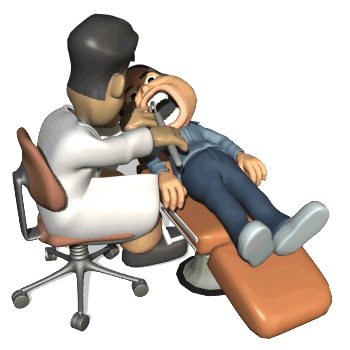|
|
 |
| Table of Contents |
1.1. Introduction
1.1.1. Endodontics role in the General Plan of the Dental Proffesional Studies
1.1.2. General and specific objectives
1.1.1. Basic phases in endodontic therapy
1.1.2. Coments to the basic and supplementary bibliography
1.2. Historic background of endodontics
1.2.1. Development periods of endodontics
1.3. Contemporary endodontics
1.3.1. Conteporary concepts of the pulpless tooth
1.3.2. Relationship with other dental specialities
1.3.3. Indications
1.3.4. Contraindications
1.4. Popular but misconceived concepts towards endodontics
1.4.1. Dead tooth
1.4.2. Black tooth
1.4.3. Fragil tooth
1.4.4. An expensive treatment
1.4.5. Time consuming treatment
1.4.6. Low rate of success
1.4.7. Some alternative medicine disregard endodontic treatment
1.5. Ethics & deontology
1.5.1 Ethimology, definition and objective
1.6. Bioethics in endodontics
1.6.1. Bioethics principles
1.6.2. Bioethics in endodontics
1.6.3. Informed consent
1.7.. Axiology
1.7.1. Structural values and accesory values
1.7.2. Axiology en endodontics
|
| |
| Key words: |
|
| |
|
|
|
| |
RETURN TO SUBJECT 1, STUDY OF ENDODONTICS, SECTION 1, INTRODUCTION
|
SUGGESTED ARTICLE ABSTRACT
DENTAL AND ORAL RADIOGRAPHIC FINDINGS IN FIRST YEAR UNIVERSITY STUDENTS IN 1982 AND 2002 IN HELSINKI, FINLAND
Objective. This study is part of a larger research program, at the Finnish Student Health Service in Helsinki, in which changes in the dental and oral health of first-year university students (born in Helsinki) in the years 1982 and 2002 were compared. Material and Methods. Panoramic radiographs were taken of 176 students in 1982, mean age 19.8 years (SD±0.7), and of 231 in 2002, mean age 20.2 (SD±0.7). DMFT index, caries and periapical changes, alveolar bone resorption, wisdom teeth, supernumerary, missing, and persisting deciduous teeth were evaluated from the radiographs. The chi-squared test and non-parametric tests were used to analyze the statistical significance of differences between the study groups and between genders. Results. The DMFT index diminished from 11.0 (SD±4.2) to 2.9 (SD±3.3) (p<0.0001). In 2002, 27.9% of the students had a DMFT index of zero (in 1982, 0%, p<0.000). The mean number of endodontically treated teeth diminished from 0.1 to 0.03 (p< 0.05). The number of impacted wisdom teeth increased in males from mean 0.41 to 0.69 (p<0.05). Conclusions. An improvement in dental health was obvious in the year 2002. The favorable change in DMFT index is a trend that has been going on for several decades in Finland, probably as a result of the use of fluorides and better education in dental hygiene. The change might also be connected with improved general health.
Peltola, JS. et al. DENTAL AND ORAL RADIOGRAPHIC FINDINGS IN FIRST YEAR UNIVERSITY STUDENTS IN 1982 AND 2002 IN HELSINKI, FINLAND. Acta Odontol Scand 2006;64: 42-46 Available in: http://www.informaworld.com/smpp/content?content=10.1080/00016350500419800
Investigated by: Dr. Ricardo Rivas Muñoz. Professor. FES Iztacala, UNAM
|
return to TOP |
|

